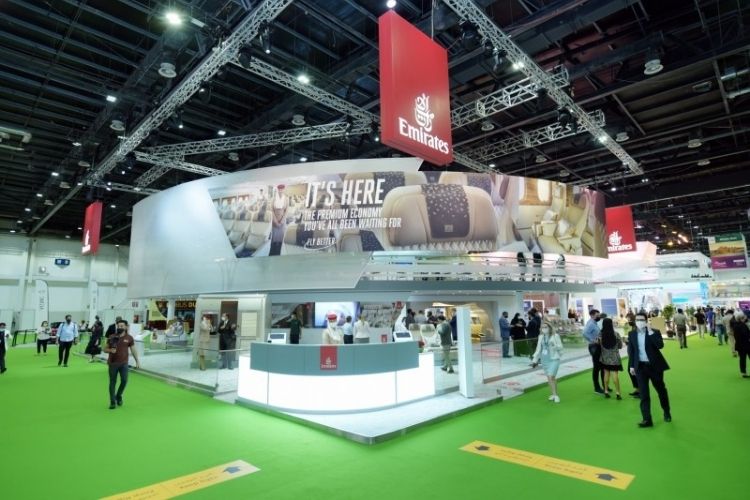Emirates successfully concluded its participation at Arabian Travel Market 2021 (ATM), the largest in-person travel industry event to take place globally since the pandemic began.
ATM ran from 16th to 19th May 2021 and is one of the world’s largest travel trade exhibitions.
According to Emirates, with strong health protocols in place, the airline was able to safely welcome more than 3,000 delegates and event attendees to its stand during the four-day event. Moreover, Emirates was recognised by the exhibition organisers of Arabian Travel Market for responsibly meeting and exceeding event safety measures while welcoming visitors.
The centrepiece of this year’s product exhibit was the airline’s recently launched Premium Economy seats. Visitors were able to relax, recline and simply experience Premium Economy, which features seats with a pitch of up to 40 inches, and a width of 19.5 inches that comfortably recline into a cradle position.
Also read: Maldives and United Arab Emirates to Establish a Travel Corridor
In addition, the Emirates stand showcased the airline’s Boeing 777-300ER game-changer First Class fully enclosed private suites exhibit, Boeing 777 Business Class seat, the newly refreshed A380 OnBoard lounge, along with other iconic products such as the First Class Shower Spa and the latest version of the game-changer Economy Class seats, all in refreshed colour palettes featuring natural Ghaf tree motifs.
During ATM, Emirates reaffirmed its commitment to collaborating with industry partners and suppliers to support the travel industry rebound with a focus on joint tourism initiatives, tech tie-ups and bolstering ongoing partnerships across the tourism and aviation ecosystem.
Emirates also signed a Memorandum of Commitment (MoC) with the Indonesian government to develop the return of tourism traffic to and from the market. Additionally, the airline inked an MoU with Huawei, which will allow both brands to build awareness across their respective sectors to a wider audience in the Middle East and beyond.







